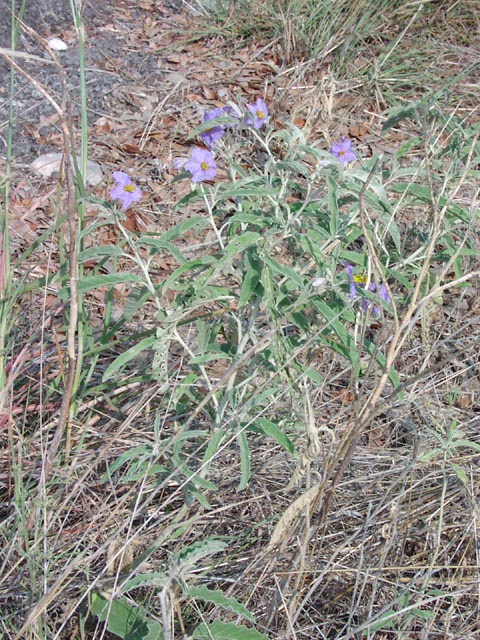|
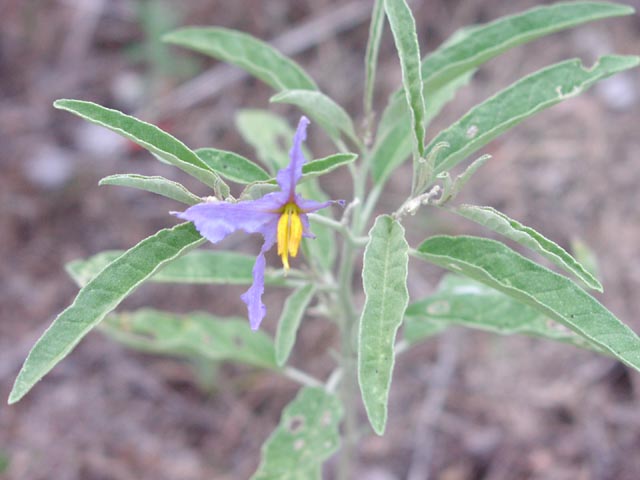 |
| habit--silverleaf nightshade is an herbaceous perennial | leaves (and a munched-on flower)--what is the leaf shape here? Also, notice that the leaves of S. eleagnifolium are narrower than those of S. dimidiatum. |
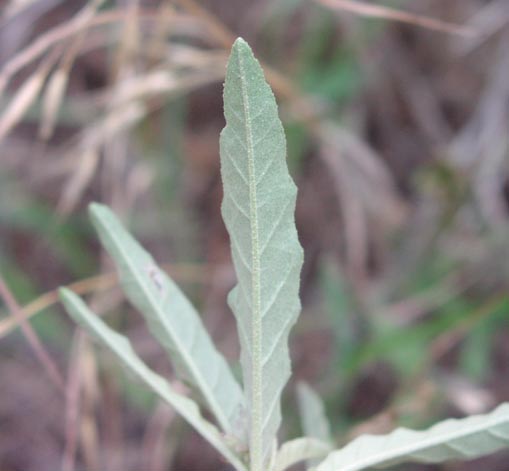 |
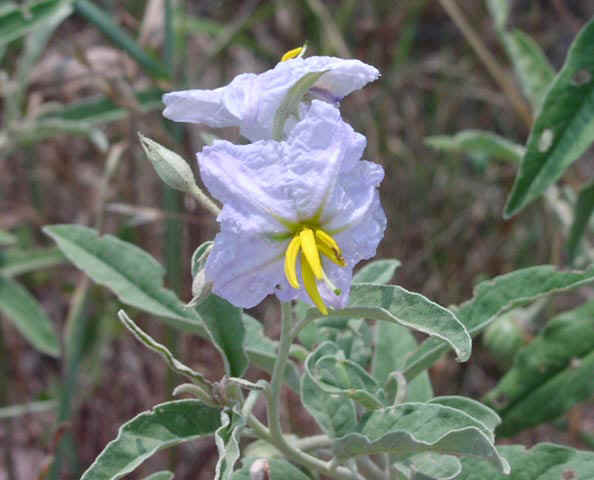 |
| leaf underside--the undersides are covered with fine hairs, giving them a silvery look (and thus the common name silverleaf nightshade) | flowers--notice how the petals are fused |
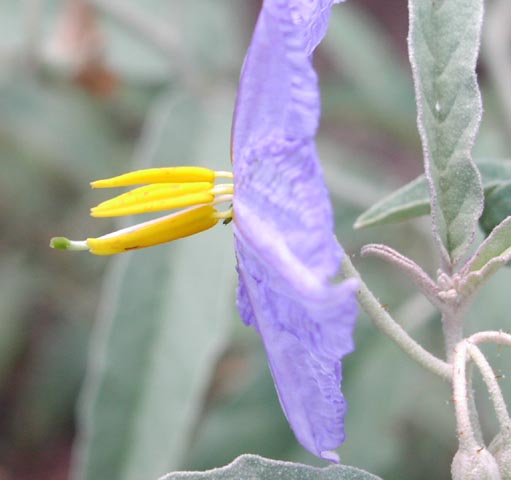 |
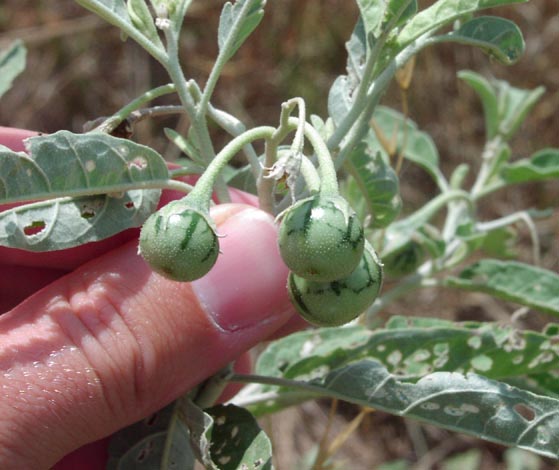 |
| flower in side view--notice how short the filaments are and how long the anthers are. These banana-shaped anthers open by pores at their tips. The only way that pollen can exit these pores, however, is if the anthers are vibrated at just the right frequency! If the right frequency is hit, the pollen will shoot out of the pores--only large bees are capable of doing this! | young fruits (berries; these will turn yellowish orange at maturity)--notice the resemblance to young cherry tomatoes? That's because tomatoes are closely related to silverleaf nightshade: most cultivated tomatoes belong to the species Solanum lycopersicon. However, the fruits of silverleaf nightshade are DEADLY POISONOUS, and should never be eaten! |
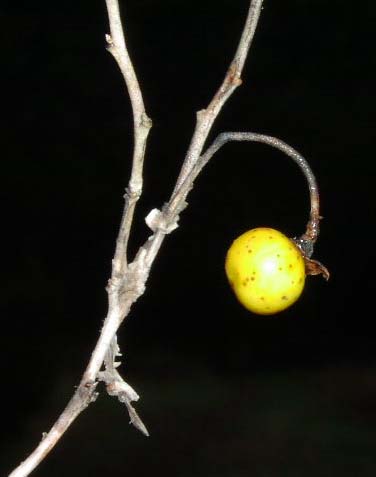 |
กก |
| mature fruit | กก |
